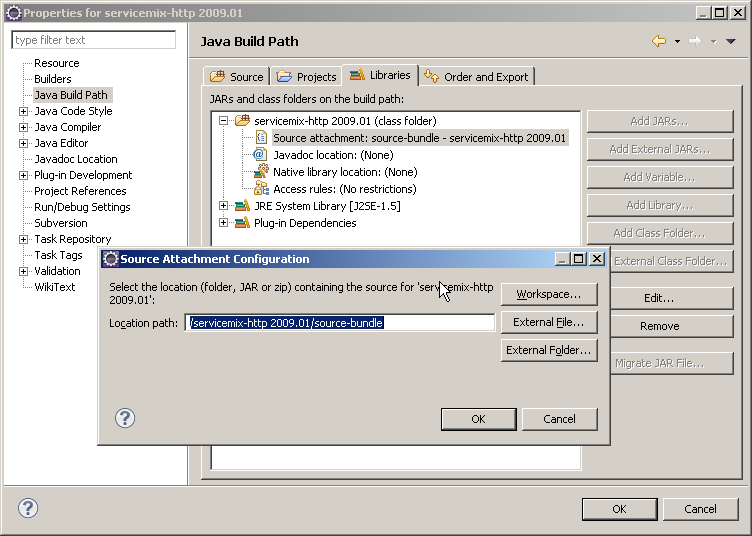Notice: This Wiki is now read only and edits are no longer possible. Please see: https://gitlab.eclipse.org/eclipsefdn/helpdesk/-/wikis/Wiki-shutdown-plan for the plan.
Difference between revisions of "Swordfish Documentation: Debugging Third Party Plugins"
| Line 1: | Line 1: | ||
==Debugging third-party plug-ins== | ==Debugging third-party plug-ins== | ||
| − | This section contains instructions on how to inspect the source code of third-party plug-ins (delivered together with the Swordfish run-time platform) during the debug session . | + | This section contains instructions on how to inspect the source code of third-party plug-ins (delivered together with the Swordfish run-time platform) during the debug session. |
| − | ==To inspect source code of third-party plug-in== | + | ==To inspect the source code of the third-party plug-in== |
<ol> | <ol> | ||
<li>Check out the appropriate plug-in project from the [http://dev.eclipse.org/svnroot/rt/org.eclipse.swordfish/trunk/org.eclipse.swordfish.third-parties Swordfish Repository] into your workspace.</li> | <li>Check out the appropriate plug-in project from the [http://dev.eclipse.org/svnroot/rt/org.eclipse.swordfish/trunk/org.eclipse.swordfish.third-parties Swordfish Repository] into your workspace.</li> | ||
| − | <li>Check if the project contains <b>source-bundle</b> sub-directory with plug-in sources. If this directory is present you can browse the plug-in source code or debug third-party plug-ins. If the source code directory is missing | + | <li>Check if the project contains <b>source-bundle</b> sub-directory with plug-in sources. If this directory is present you can browse the plug-in source code or debug third-party plug-ins. If the source code directory is missing, add it by following the instructions in the next section.</li> |
</ol> | </ol> | ||
Latest revision as of 09:27, 1 July 2009
Debugging third-party plug-ins
This section contains instructions on how to inspect the source code of third-party plug-ins (delivered together with the Swordfish run-time platform) during the debug session.
To inspect the source code of the third-party plug-in
- Check out the appropriate plug-in project from the Swordfish Repository into your workspace.
- Check if the project contains source-bundle sub-directory with plug-in sources. If this directory is present you can browse the plug-in source code or debug third-party plug-ins. If the source code directory is missing, add it by following the instructions in the next section.
To add source-bundle to third-party plug-in project
See instructions in the source codes for third-party plug-ins. These are organized in form of source-bundles according to the rules defined by Eclipse Orbit project.
To create a source bundle:
- Get the source code for the third-party plug-in (plug-in version information can be found in the plug-in's manifest file) and add it to the project as described on the Eclipse Orbit wiki.
- Attach the source code to the plug-in's binaries as shown in this picture:

